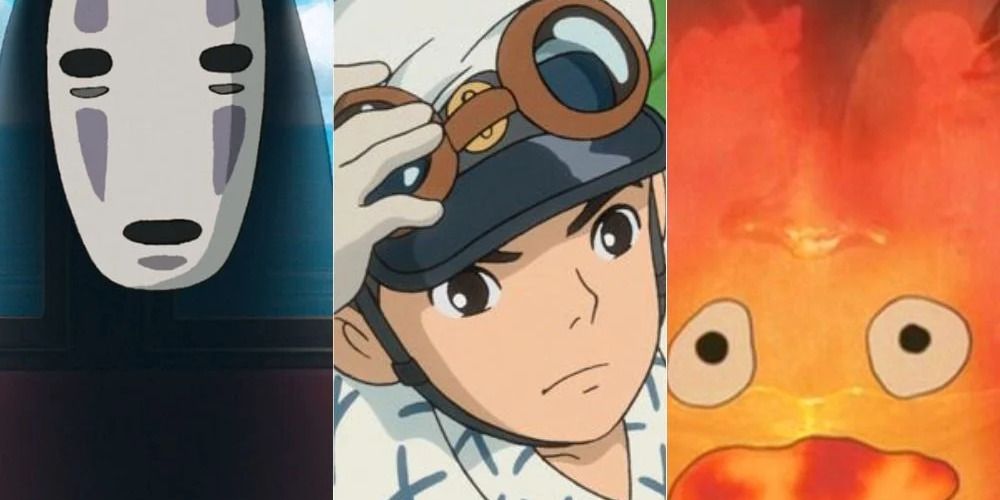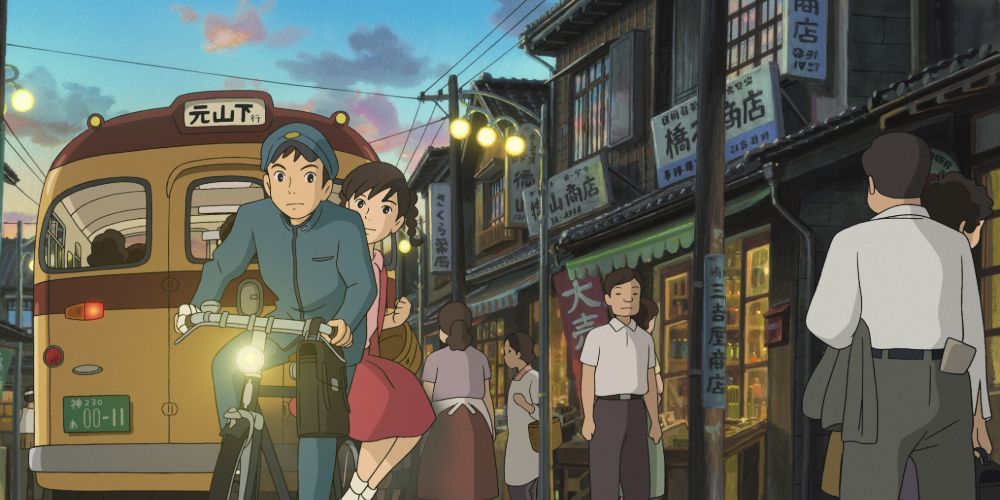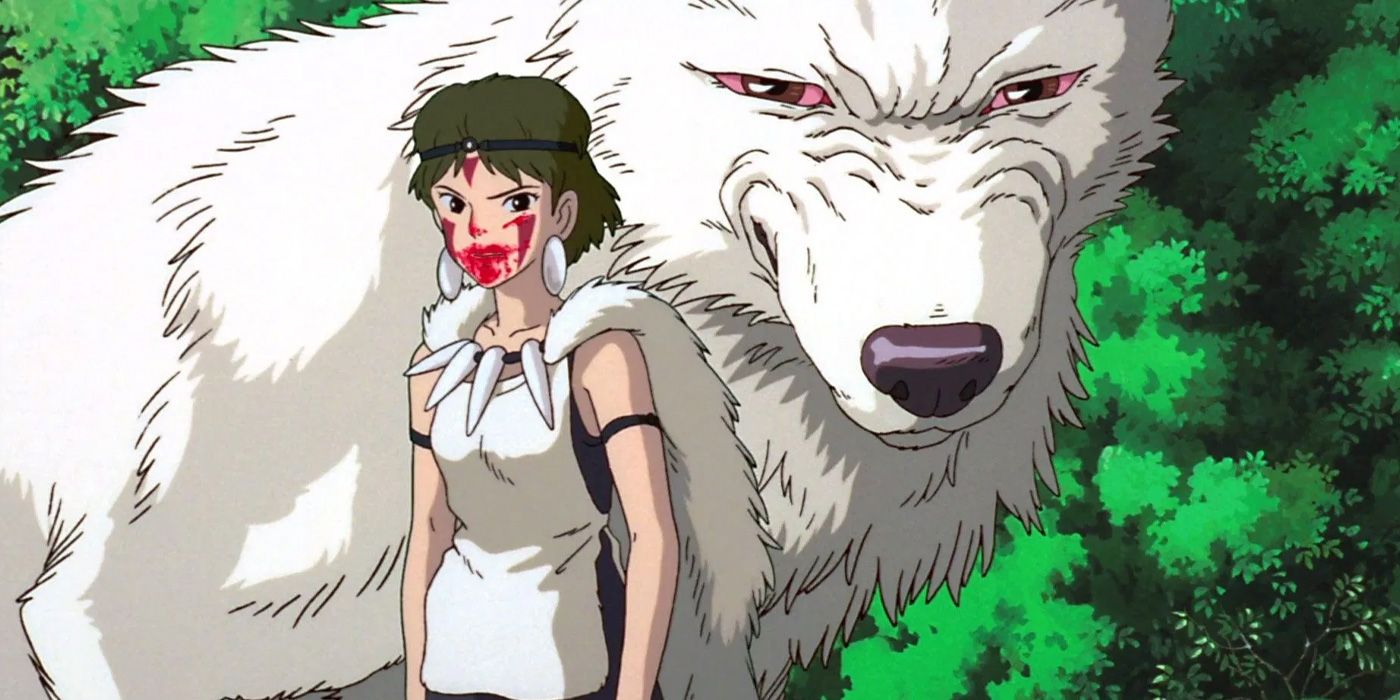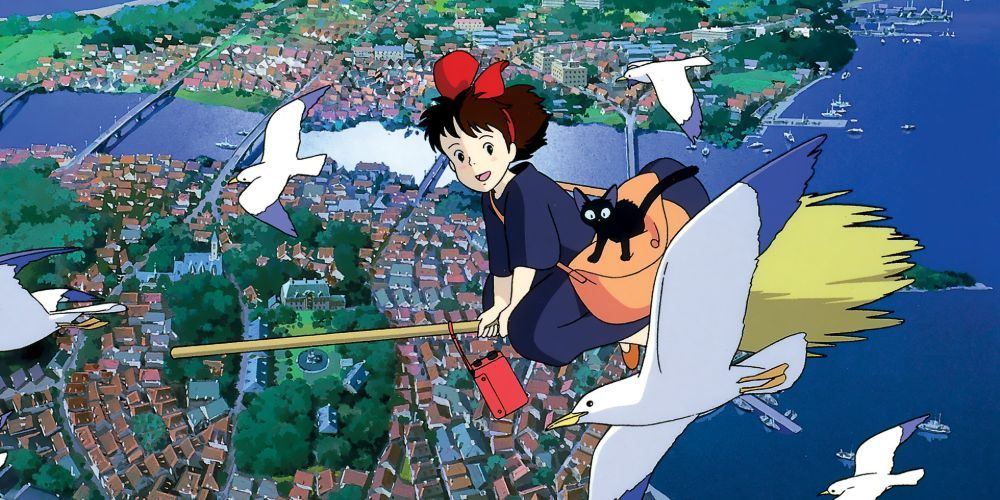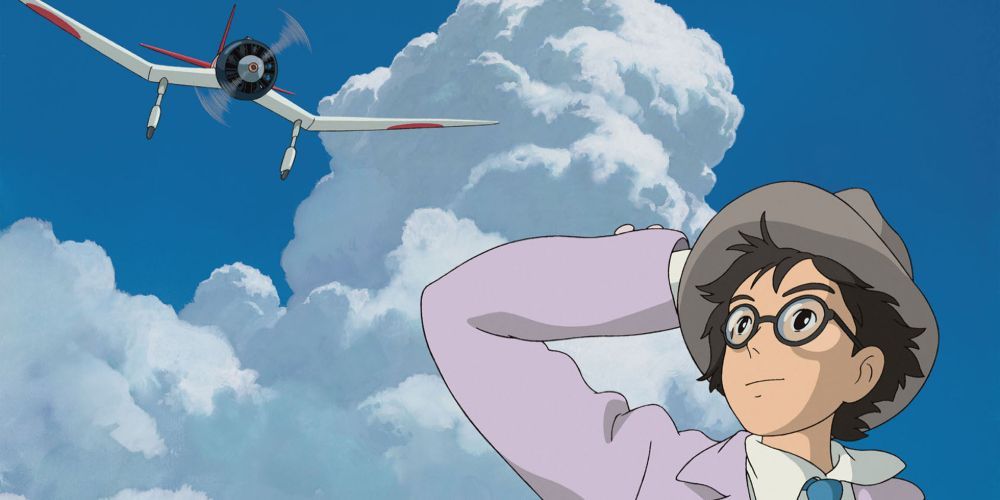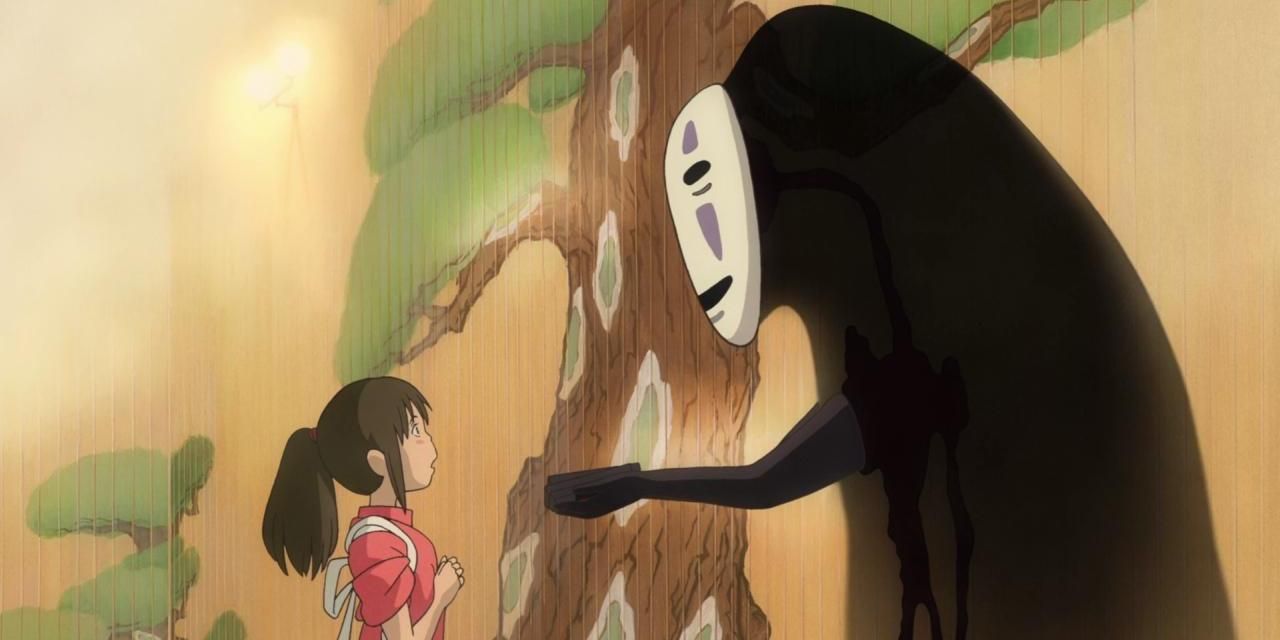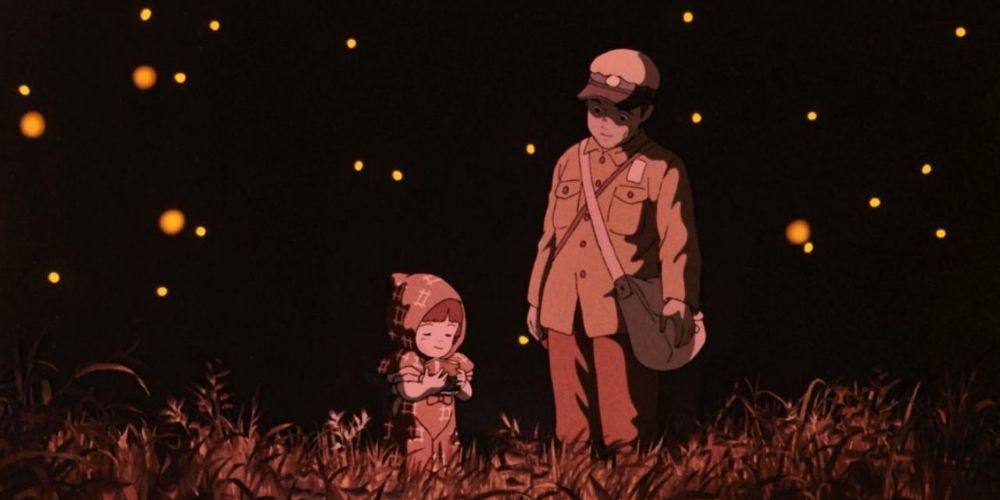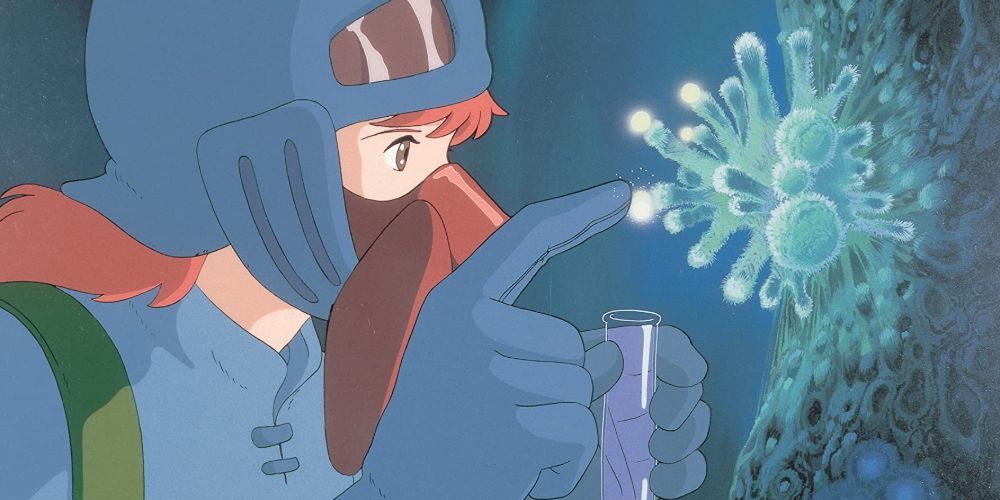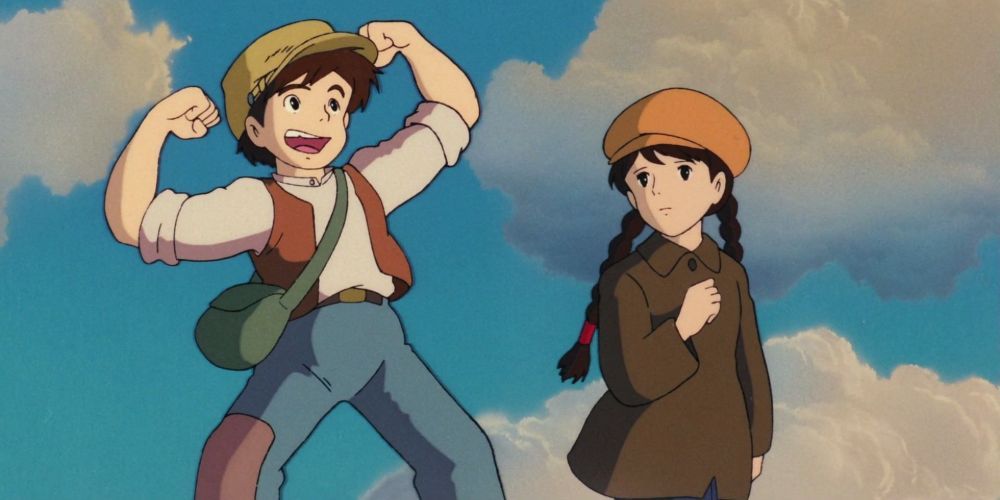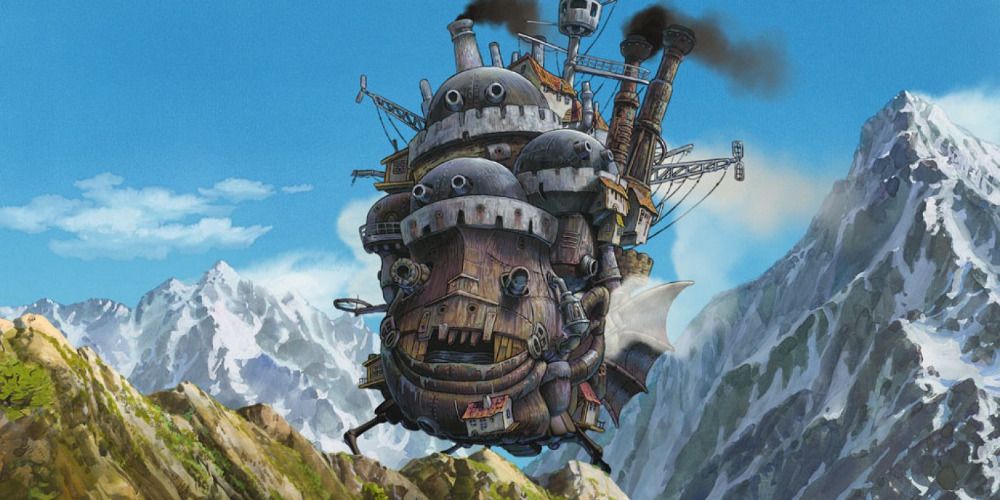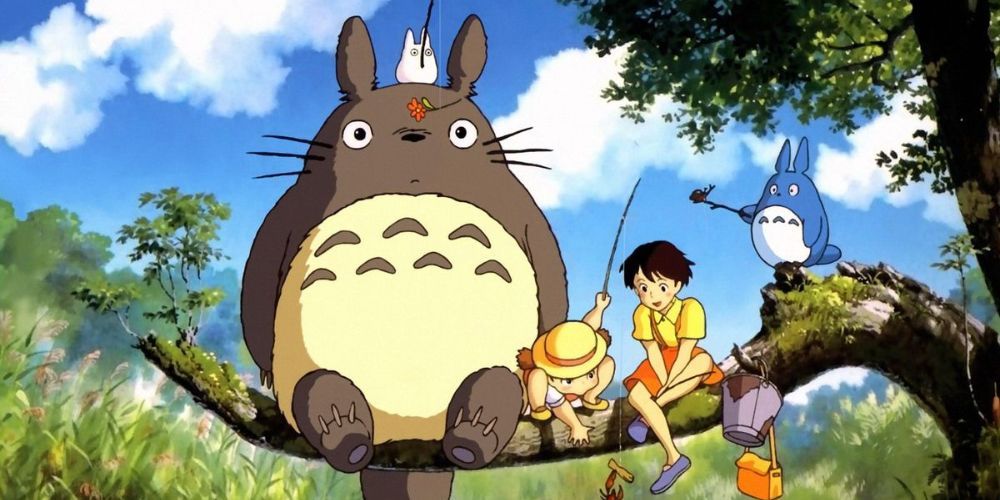Everyone has a favorite film. Now think of it without the soundtrack and how that might change your understanding. Music greatly impacts how an audience interacts with a film. It heightens emotion and helps people react to a character's actions. While some composers purposefully put the music and characters at odds, most of the time it's seamless with the story.No one accomplishes this better than Studio Ghibli's Hayao Miyazaki and his close friend and composer Joe Hisaishi. Their impact is undeniable because people will listen to Studio Ghibli soundtracks exclusively. A good soundtrack can make or break a film, and Miyazaki and Hisaishi create a dream team of storytelling and music.
From Up on Poppy Hill (2011) - Heartfelt History
From Up on Poppy Hill is a story about childhood, family, and preserving history. Teenagers Umi and Shum both have lost their fathers, and they struggle to learn how to carry on their family legacy, symbolized by the raising of the naval flags and saving the school club building.
Much of the soundtrack is a simple yet lyrical piano melody that combines the silent presence of grief and the light of childhood friendship. The theme repeats itself throughout at different levels of intensity, cueing the audience that even though the two protagonists go through so much, their bond remains constant at the bottom of it all. The soundtrack is sweet with a small-town charm that leaves the audience feeling nostalgic for a life they never had.
Princess Mononoke (1997) - The Fight for Balance
Princess Mononoke centers on three characters, Prince Ashitaka, a wandering prince trying to free himself from a demon’s curse, San, a girl raised by wolves and protector of the forest spirits, and Lady Eboshi, a leader of an industrial town who is trying to give better lives to the less fortunate.
The soundtrack transports the audience into the majestic yet dangerous world of demons and spirits. Trilling winds, long-held low-pitched notes, and dissonant strings grab the audience’s attention and do not let go. It creates an aura of tension and yearning as these characters fight to preserve balance and peace between the different territories. The cacophony of battling voices elevates in the music, almost telling its own story. Princess Mononoke is a mesmerizing soundtrack that combines fantastical elements with an inspiring charge.
Kiki's Delivery Service (1989) - A Young Witch Finds Her Voice
Kiki’s Delivery Service is a coming-of-age story about a young witch who leaves her small country town to pursue a life in the big city as a magical delivery person. The music plucks with a child-like optimism as Kiki explores her new life in the city. The strings and winds sing almost frantically like a child trying to take everything in at once. It is serene and cheerful as Kiki observes the town life from her broomstick, and the audience cannot help but just feel good.
The soundtrack works because it captures the feeling of innocent wonder and melancholy responsibility in a way that touches an audience of all ages. It surrounds the audience with an emotional experience as they cheer for Kiki in her excitement and encourage her in her failings. The music transitions with Kiki during her learning curve and leaves the audience with a feeling of hope for her future.
The Wind Rises (2013) - The Winds of War and Life
A fictionalized dramatization of real-life aircraft designer Jiro Horikoshi, The Wind Rises explores what happens to young people’s dreams in the midst of World War II. Jiro must sacrifice his passion for designing beautiful aircraft at the cost of aiding a bloody war. The soundtrack reflects these emotional sacrifices. Brass trumpets blare military-patriotic music, leading the audience to feel good about serving one’s country.
The acoustic guitar and the strings slow things down to show Jiro and Naoko’s contemplative and innocent love. The winds like the clarinet and flute soar throughout to reflect the exhilarating and unpredictable nature of the wind. Musical form fits the story’s function as the music mirrors the experience of wind rising. Overall, the soundtrack is bright but dampened by the trials of life.
Spirited Away (2001) - Spirit of Growth and Change
Perhaps the most popular Studio Ghibli film, Spirited Away remains iconic in terms of story, art style, and music. As Chihiro and Haku fight to regain their identities in the spirit world, the music takes its own journey. The piano is sentimental, yet filled with an ache for restoration. Like Haku’s river, it flows sporadically as if it is trying to find a secure riverbank. It travels in an insecure direction, reflecting the characters as they venture through the journey of life.
The music has a deceptive lightness with high-pitched tones and airy melodies, but it is all grounded in a pervasive heaviness which implies the weight of responsibility that Chihiro carries to save herself and her parents. Overall, the soundtrack is memorable because it reflects the human psyche in relatable ways.
Grave of the Fireflies (1988) - A Heartbreaking Tale of Grief
One of the more direct war commentary films done by Studio Ghibli, Grave of the Fireflies tells the story of a young brother and sister as they fail to survive the downfall of Japan in World War II. The entire soundtrack is like a dark lullaby as it mourns the loss of so many lives. A wind instrument plays a haunting solo against twinkling chimes that sound like fireflies. It is jarring with almost no hope. The few breaths of serenity are snuffed out by overwhelming strings and long pauses.
Grave of the Fireflies is a different perspective on childhood innocence. Instead of showing its power in warmth and joy, the film’s soundtrack shows the helplessness of innocence in the face of war and evil. While the music may be hard to listen to without tearing up, it is worth listening to because it brings the audience closer to understanding the value of human life.
Nausicaa of the Valley of the Wind (1984) - Beauty in the Apocalypse
Nausicaa of the Valley of the Wind is about a young princess living in an apocalyptic world destroyed by war. Humans, the earth, and creatures alike are desolate and struggling to find peace in a poisoned environment. Pounding military drums and tender piano highlight Nausicaa’s pure voice in the midst of darkness. Even with warped, sci-fi overtones, the audience can still feel the heartache in the music.
10 Best 2021 Movie Soundtracks, Ranked
"Nausicaa’s Requiem", a hauntingly beautiful melody sung by a child, reminds the audience of the innocence that was lost in the terrors of war. The classical themes fight to form some sort of civility and order in the chaotic world. Even if there is some redemption, in the end, the audience experiences the cost of war and what people’s souls lose along the way.
Laputa: Castle in the Sky (1986) - The Legend of the Lost Princess
Taking to the skies once again, Studio Ghibli’s Laputa: Castle in the Sky involves a lost princess, a special pendant, and a floating castle. The film envisions a steampunk, fantasy world that struggles to find the balance between advancing technology and preserving nature.
The music describing Laputa is mystical, bringing the audience to feel peace and inspiration for a better world. The main orchestral theme is majestic but melancholic as it sweeps the audience up to try and get a glimpse of the glory of Laputa. The audience can almost feel the sun on their skin and wind through their hair as they watch the heroes search the skies. It brings listeners on a journey that only music can and communicates the values of hope, humility, and love without uttering a word. Castle in the Sky is a fantasy film that should be praised for its soundtrack.
Howl's Moving Castle (2004) - Wizards, Waltzing, and Wandering, Oh My
Loosely based on a British novel of the same name, Howl’s Moving Castle examines the consequences of age, war, and love in the world of magic. If there is one thing this soundtrack has, it is energy. Just like Howl’s slapdash nature, the melody picks the audience up and escapades them on a whimsical journey. The chirping flutes and waltz-like rhythm feel like sunshine on a spring day.
Nothing describes the power of the soundtrack like the main theme, called “The Merry-Go-Round of Life”. The tune flows around like a fairy-tale but remains grounded with a hint of wistful wandering.
It shows the audience that despite the characters’ willingness to do well in their circumstances to get the most out of life, sometimes it is ok to be sad and reminisce about things lost.
My Neighbor Totoro (1988) - The Joy of Childhood Magic
My Neighbor Totoro whisks the audience away into a world of warmth, magical creatures, and childhood. Sisters Satsuki and Mei go through a difficult transition of moving to a new home to be closer to their hospital-ridden mother. The soundtrack is dreamy and longingly nostalgic as the audience watches the children find joy in the simple things of life. It is almost like the audience can feel the scampering of little feet and the Catbus leaping through the air via the upbeat orchestra.
Yet with all its cheerful tones, the movie also mellows out with a softer, more contemplative side. The bittersweet piano melodies support Satsuki as she carries the burden of being the mother of the house at just eleven years old. The plucking strings and cascading strings help Totoro display his curious and steadfast side. Overall, the music feels like home as it reminds the audience to never let go of their inner child.

